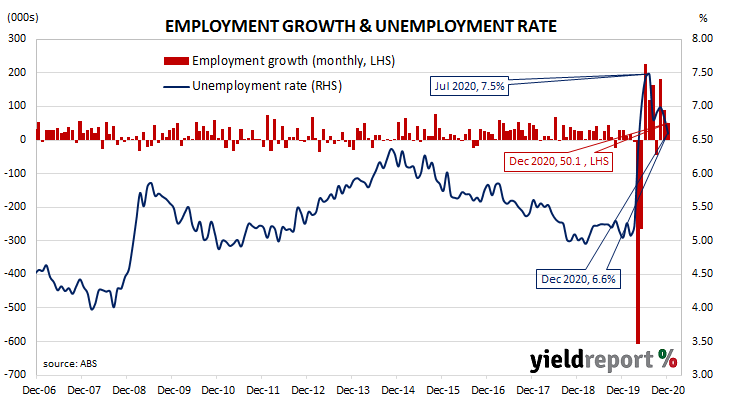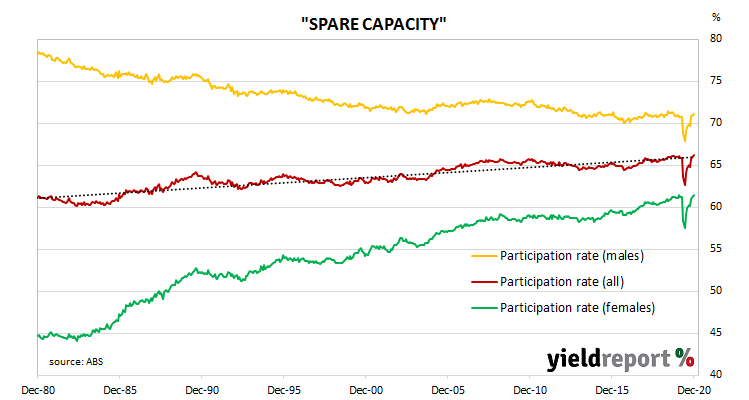Summary: Employment grows in December; employment number rises in line with expected figure; “far stronger than anticipated”; national participation rate reaches new peak; fewer people seeking work with larger available workforce sends jobless rate down; part-time, full-time jobs both up; work hours rise marginally over month but still down over year; underemployment rate back to pre-COVID level; labour supply “continues to outstrip demand.”
Australia’s period of falling unemployment came to an end in early 2019 when the jobless rate hit a low of 4.9%. It then averaged around 5.2% through to March 2020, bouncing around in a range from 5.1% to 5.3%. Leading indicators such as ANZ’s Job Ads survey and NAB’s capacity utilisation estimate suggested the unemployment rate would rise in the June quarter and it did so, sharply. The jobless rate peaked in July before falling below 7% in August. The RBA and some economists expected the rate to rise to a higher peak before the end of 2020 but their forecasts turned out to be overly pessimistic.
The latest Labour force figures have now been released and they indicate the number of people employed in Australia according to ABS definitions increased by 50,100 in December. The rise was less than November’s 90,000 increase but in line with the expected figure.
“The labour market recovery has been far stronger than anticipated,” said Westpac senior economist Justin Smirk.

Long-term domestic Treasury bond yields fell modestly, slightly outpacing US Treasury bond movements. By the end of the day, 10-year and 20-year ACGB yields each lost 2bps to 1.08% and 1.77% respectively, while the 3-year yield finished unchanged at 0.18%.
In the cash futures market, expectations of a change in the actual cash rate, currently at 0.05%, also barely changed. At the end of the day, contract prices implied the cash rate would trade in a range between 0.03% and 0.06% through to mid-2022.
The participation rate ticked up from November’s 66.1% to 66.2% as the total available workforce grew by 20,000 to 13,822,800. The number of unemployed persons declined by 30,100 to 912,000; the lower unemployment number in conjunction with the increase in the number of people in the workforce led to a fall in the unemployment rate from 6.8% to 6.6%.

The aggregate number of work hours across the whole Australian economy increased as 14,300 part-time positions and 35,700 full-time positions were added. In percentage terms, the total number of work hours rose by 0.1% in December following a 2.5% rise in November. However, on a 12-month basis and after revisions, aggregate hours worked contracted by 1.5% as an additional 12,000 part-time employees were outweighed by the loss of 75,900 full-time employees in the past year.

